Which Waste goes into Which Bin?
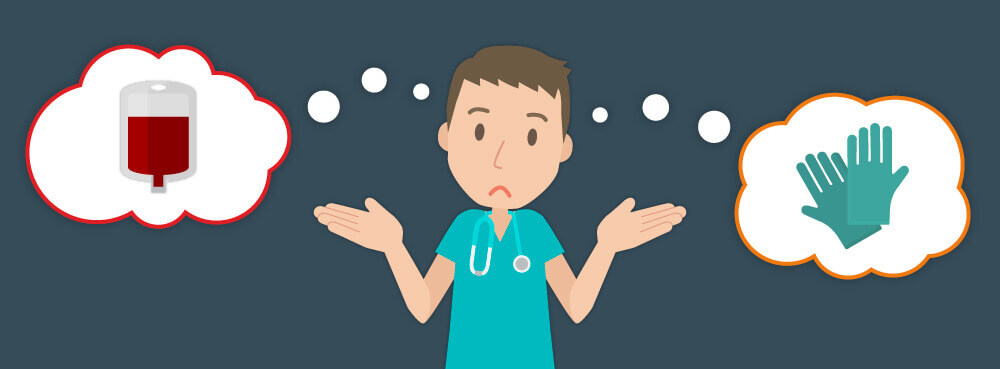
Editor’s note: This post was originally published in April 2021 and has been updated for accuracy and comprehensiveness.
"Who am I? Why am I here? Where am I going? These are some of life's biggest questions. Another one, perhaps less existential but equally important is: 'Which waste goes into which bin?'
Understanding hospital waste colour coding is crucial for proper medical waste segregation. This isn't just about following rules – it's essential for compliance, reducing costs, and protecting our environment. By using the correct color-coded containers, you can prevent contamination, ensure safe waste management and promote sustainability.
While there are many ways to optimise your waste management processes, let's start with the simplest – understanding waste management colour codes and their corresponding waste types.
Your Guide to Hospital Waste Bin Colour Coding in the UK
Looking for a specific hospital waste colour code?
1 / Clinical Infectious Waste for Incineration
2 / Clinical Infectious Waste Suitable for Alternative Treatment
3 / Cytotoxic and Cytostatic Waste
8 / Waste Optimisation Made Easy
Let’s jump straight in with clinical waste bin colours…
Clinical Infectious Waste for Incineration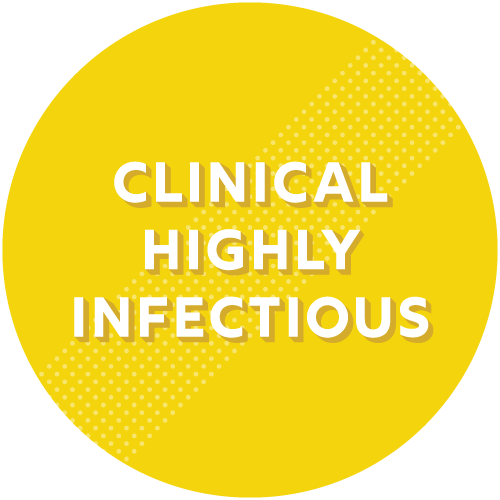
Clinical infectious waste for incineration refers to waste classified as being highly infectious due to a secondary contamination such as medicinal or chemical.
Clinical waste bin colour: Yellow bag or container.
Examples of (Yellow) clinical waste are:
- Contaminated tubing, IV bags, syringes and needles
- Other chemical (iodine) contaminated swabs and dressings
- Diagnostics tests kits, vials
We recommend disposing of yellow clinical infectious waste in our IN64 Clinismart Container and medicinally contaminated sharps into our ISO-compliant reusable sharps containers.
Clinical Infectious Waste Suitable for Alternative Treatment
Clinical infectious waste suitable for alternative treatment refers to waste that has come into contact with infectious bodily fluids and isn’t medicinally or chemically contaminated. This also includes waste generated from a patient diagnosed with any type of communicable disease.
Clinical waste bin colour: Orange bag or container.
Examples of (Orange) clinical waste are:
- Swabs and dressings from infectious patients
- Disposable PPE and other items saturated with bodily fluids from patients suspected or known to be infectious
It’s important to note that neither anatomical nor pharmaceutically contaminated waste can be disposed of in this waste stream. We recommend disposing of orange clinical infectious waste in our AT64 Clinismart Container and used, non-medicinally contaminated sharps in our ISO-compliant reusable sharps containers.
Cytotoxic and Cytostatic Waste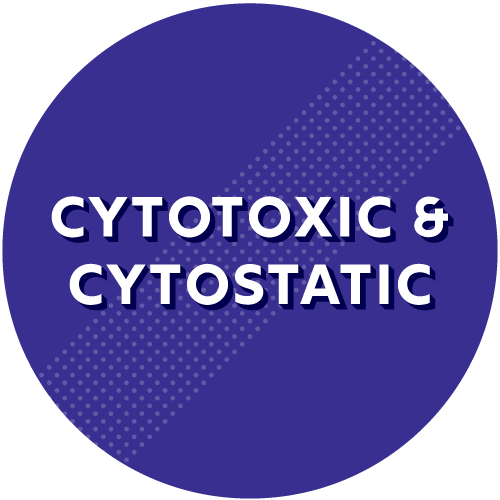
The Cytotoxic and cytostatic waste stream includes this hazardous medicine group and any materials contaminated with them. It’s disposed of via high-temperature incineration.
Cytotoxic/cytostatic waste bin colour: Purple lid container.
Examples of (Purple) cytotoxic/cytostatic waste are:
- Cancer treatment drugs
- Antiviral medicines
- Ciclosporin medicines
- Certain hormonal preparations including prostaglandins and androgens
It’s important to note that cytotoxic/cytostatic medicines fall under EWC code 18 01 08 and must be segregated from other pharmaceuticals and securely disposed of. We recommend disposing of purple cytotoxic and cytostatic waste in our reusable cytotoxic waste containers.
Pharmaceutical Waste
The pharmaceutical waste stream includes any unwanted, contaminated, or expired medications and includes any unused pharmaceutical products and/or drugs that aren’t cytotoxic or cytostatic.
Pharmaceutical waste bin colour: Blue lid container or blue box.
Examples of (Blue) pharmaceutical waste are:
- Non-hazardous medicines such as tablets, capsules, liquid suspensions and powders
- Out of date or partially used pharmaceuticals in primary packaging
- Controlled drugs destruction kits
- Recalled pharmacy stock
The mismanagement of pharmaceutical waste has severe repercussions for the general public and the environment. If not handled properly, Pharmaceutical waste can enter our environment, causing water pollution and food contamination. We recommend disposing of blue pharmaceutical waste in our tamper-proof and secure reusable non-hazardous pharmaceutical waste containers.
Anatomical Waste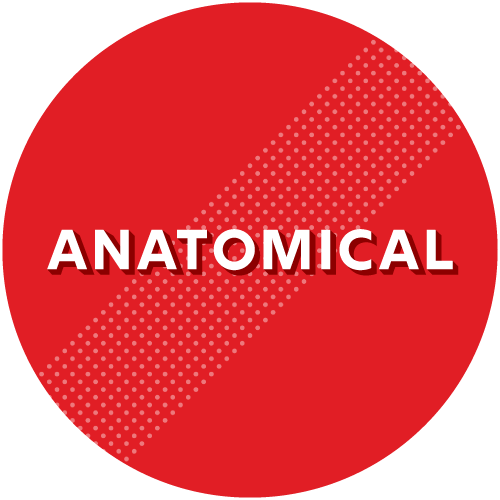
This waste stream mostly impacts operating rooms, birthing suites, research facilities and teaching facilities as it is for all body parts and recognisable human or animal tissue waste that require disposal. Anatomical waste can contain both hazardous and non-hazardous wastes - it must be incinerated.
Anatomical waste bin colour: Red lid container.
Examples of (Red) anatomical waste are:
- Limbs, organs, placentas and full or partially used blood bags
- Pathological and biopsy specimens
Given the potentially infectious nature of anatomical waste, stringent regulations govern its collection, transport and disposal. As experts in all healthcare waste management, our team works with you to determine the correct containment, labelling and segregation instructions required for the type of anatomical waste generated from your facility – we're here to make it simple.
We recommend disposing of your anatomical waste in our rigid and leak-proof anatomical waste containers.
Dental Waste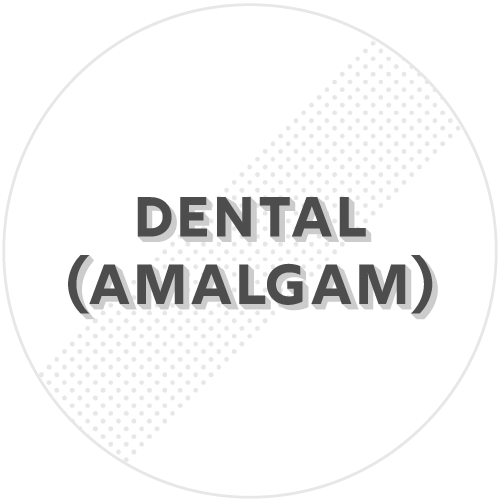
Dental waste is hazardous and must be carefully disposed of in compliance with healthcare waste regulations such as the Health Technical Memorandum (HTM) 07-01.
Sharpsmart is equipped with the solutions to safely and compliantly handle and dispose of any dental waste including, clinical waste, sharps waste, amalgam and chemical wastes.
Examples of specialist dental waste are:
- Mercury Containing Wastes /Dental Amalgam
- Silver Containing Wastes/X-Ray fixer and developer and unused Films
- Lead Containing Wastes/X-Ray lead foil
- Chemicals, Disinfectants and Sterilising Agents
- Sharps, Offensive and Infectious wastes
Our management solutions are designed to optimally handle all dental waste streams in the most efficient and cost-effective manner, providing the safest sharps containment systems for the reduction of sharps injuries, spill kits, amalgam separators, waste containment for clinical, mercury and other hazardous wastes,
So that’s the clinical waste bin colours cleared up, but there’s an important non-clinical waste stream that’s crucial to segregate correctly to reduce your carbon footprint and achieve the 20-20-60 waste split target outlined in the NHS Clinical Waste Strategy…
Offensive Waste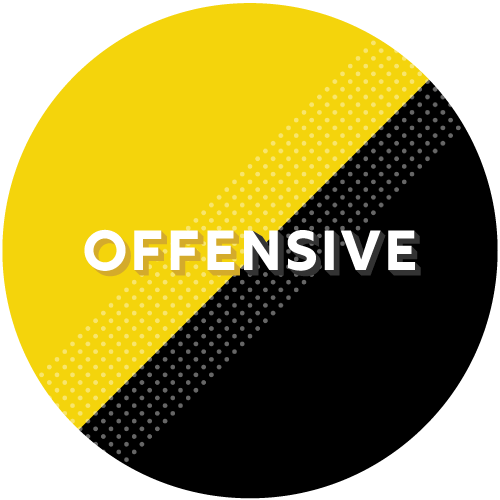
Often referred to as tiger stripe waste due to the colour of the bags used, offensive healthcare waste is for non-hazardous and non-infectious recognisable healthcare waste that may contain body fluids (secretions or excretions) and have an unpleasant odour and appearance.
Offensive waste bin colour: Yellow and black (Tiger) striped bags.
Examples of offensive waste are:
- Disposable used, uncontaminated PPE
- Incontinence pads and nappies
- Colostomy bags
- Empty fluid (saline) bags
- Treatment waste from non-infectious patients
As the most common waste stream for hospitals, GPs, care homes and private healthcare, offensive waste has historically been ignored by traditional waste companies because ultimately 'diversion from infectious waste impacts the bottom line'. At Sharpsmart, our passion is restoring the balance of safe and sustainable healthcare waste management – explore our offensive waste disposal solutions.
So there you have it, a comprehensive guide to waste bin colour coding in the UK healthcare setting.
See our blog on the types of bins you'll find in a hospital to learn more about the different types of hospital waste bins.
Waste Optimisation Made Easy
From NHS Hospitals and Trusts to independent patient-care facilities, the above guidance on correct waste disposal follows the Department of Health's HTM 07-01 Safe and Sustainable Management of Healthcare Memorandum.
At Sharpsmart, we partner with our customers to ensure that through education, clear colour-coded containers and labelling, and correctly mapped bin placement – we can drive the highest conformance to correct waste segregation.
Proper waste segregation is a crucial component of safe and sustainable healthcare practices, and our experts are here to support your teams and guide you through the process.
If you’re facing challenges with waste stream management, get in touch and we’ll reach out to help you navigate cost reduction and compliance within your facility.

